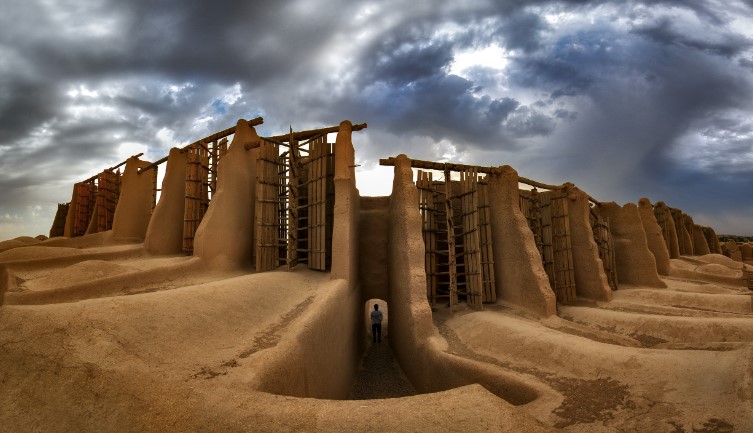The Nashtifan Windmills have been harnessed for centuries, even millennia, for various purposes, from sailing ships to grinding grain. For example, the windmills of Nashtifan, a small town in Khorasan, Iran, have been grinding grain for over 1,000 years. Let’s explore the fascinating history of the oldest windmill in the world, their unique features, and their cultural significance.
The Origins of the Nashtifan Windmills
The Nashtifan windmills, also known as the Ali Qapu windmills, are said to have been built around 1000 CE during the Seljuk period. The region where the windmills are located, Khorasan, was an important center for agriculture and trade, and the windmills were an essential part of the local economy. They were used to grind wheat, barley, and other grains, which were then sold in local markets or exported to other parts of the region.

The Design of the Nashtifan Windmills
The Nashtifan windmills are unique in their design and construction. They are made entirely of natural materials, including clay, straw, and wood, and have no metal parts. The windmill’s blades are made of locally grown palm leaves, which are woven together and attached to a central shaft. The shaft is connected to a large stone grinding wheel, which is used to grind the grains. The handcrafted wooden blades whirl with a surprising velocity and power grindstones during turbulent winter months.

How the Nashtifan Windmills Work
The Nashtifan windmills work by harnessing the power of the wind to turn the blades, which then rotate the central shaft. The central shaft is connected to the grinding stone, which grinds the grains into flour. The windmills are positioned in such a way that they can take advantage of the prevailing winds, which blow from the northwest. The windmills are also able to adjust to changes in wind direction, thanks to their unique design. So long as caretakers are willing to maintain them, these earthen structures could last for centuries.

The Cultural Significance of the Nashtifan Windmills
The Nashtifan windmills are not only an important part of the local economy but also a cultural symbol of the region. They are considered to be one of the oldest examples of wind power technology in the world and have been recognized as a UNESCO World Heritage Site. Nish Toofan is Nashtifan’s original name, which refers to the strong winds that blow through it. The windmills have also been celebrated in poetry, literature, and music, and are an enduring symbol of the ingenuity and resourcefulness of the people of Khorasan.

Restoration and Preservation Efforts
Over the centuries, many of the Nashtifan windmills have fallen into disrepair or have been destroyed, as newer technologies have replaced traditional wind power. However, in recent years, there has been a renewed interest in windmills and their preservation. Several organizations, including the Iranian Cultural Heritage Organization, have undertaken restoration efforts to preserve the remaining windmills and to promote their cultural significance.
Ali Muhammed Etebari, the amiable custodian of Nashtifan’s windmills, estimates that some are more than 1,000 years old. With a raspy laugh and finger jab, Etebari told a film crew with the International Wood Culture Society, “If I don’t look after them, the youngsters will come and spoil it.”
Here watch the video.






